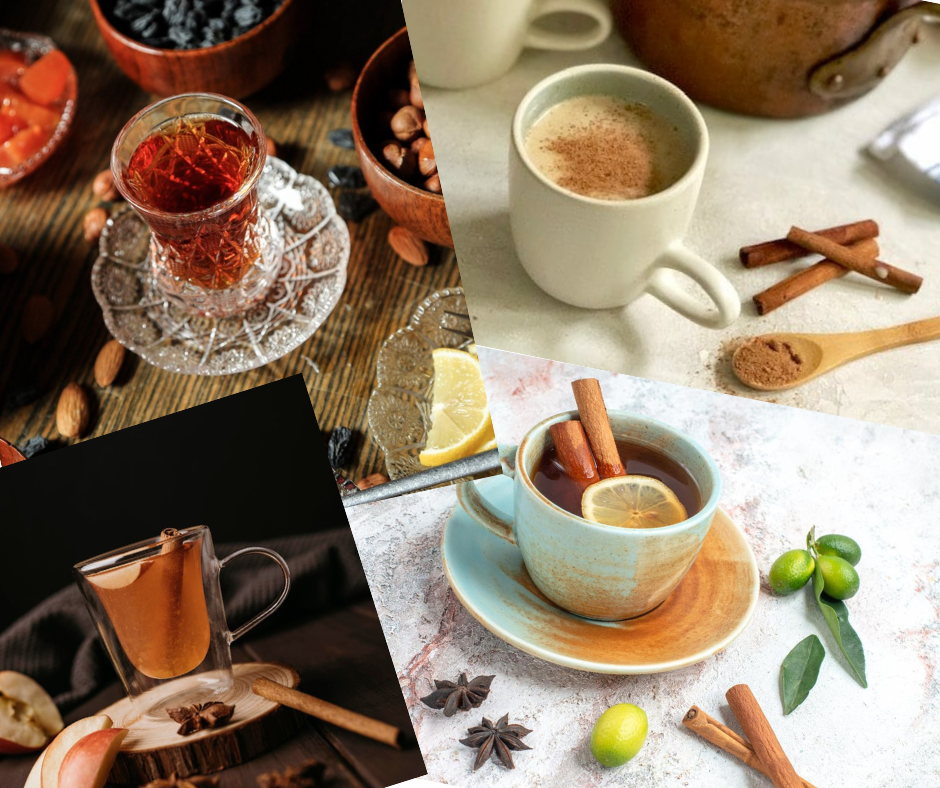What Is Chai Tea?

Chai tea is a blend of spices that is brewed with water, but most people love adding milk to it. Unlike today when chai tea is basically a black tea mixed with spices like cinnamon and cardamom, in the past, chai was a pure mixture of spices and it didn’t include any black tea or milk at all. This was until the British colonisation of India. The name comes from the Hindi ‘chai’ which means tea, but it’s also known as masala chai which in translation is spiced tea.
Nutrition
Aside from its amazing taste, the thing that makes all sweet and aromatic chai products so popular is their nutritional value. This tasty elixir is a great source of antioxidants like theaflavins and catechins which are known for being great in fighting oxidative stress. It’s also said that they play a huge role in preventing cancer and some other serious health conditions. Depending on the contained ingredients and on the way it’s prepared, this warm beverage may also contain manganese, calcium, potassium and vitamin K. If unsweetened and with no milk in it, a warm cup of this tea contains zero calories, fat, protein, carbohydrates, sugar and fibre. An essential thing to have in mind is that tea contains a certain amount of caffeine which depends on the brand, tea and type of tea content. Approximately, a cup of tea can have somewhere between 40 – 61 milligrams of caffeine.
Chai vs. Coffee: Is It the Same?

Given the fact that tea contains caffeine as well, is it possible that they are the same?! Well, practice shows that caffeine content in tea is much lower than in coffee, especially the ones that come in bags. So, if you worry about your caffeine intake and want to reduce it, you can have peace of mind that drinking tea is way better option. In case you love both of these drinks, you’ll do need to calculate their concentrations and drink only the allowed dose of caffeine which is 400 milligrams per day for healthy adults. In case you experience some kind of problems, reducing caffeine intake is paramount.
Benefits

Being made from natural herbs and plants, chai products are considered the safest especially when brewed the right way. Aside from being safe, tea is also a healthy beverage that can provide you with numerous benefits like lowered blood pressure and blood sugar, improved brain function and reduced bloating. Some kinds of tea are also found beneficial in burning fat, soothing an upset stomach and soothing a sore throat.
Types of Chai Tea by Country

Traditional Indian
The name of this tea is Chai Masala. It’s a strong black tea mainly Assam combined with traditional cardamom and ginger. Both of these spices are dominant and are mainly mixed with some other spices like black, pepper, cloves, cinnamon, fennel seeds, star anise, peppercorn and nutmeg. Aside from water, this tea is mainly consumed with buffalo milk and sweetened with plain white sugar or some other traditionally used sweeteners.
India Kashmiri
The traditional name of this tea is Kahwah and it mainly contains green tea in a combination with cardamom, cloves, cinnamon, almonds, roses and rarely saffron. Unlike the traditional Indian tea, this one is consumed without milk but it allows for being sweetened with sugar and honey.
Afghanistan
This tea is Kahwah and is the same green tea used in India – Kashmiri, but unlike the other one, this one is mixed with cinnamon bark, saffron strands, cardamom pods, and in some cases it can contain ginger, peppercorns and almonds. It is consumed without milk and with sugar.
Pakistan
The Noon Chai also known as Pink Tea is a quite popular sort of green tea. Some of the most common spices combined with it are cardamom, pistachios, almonds, cinnamon, star anise and sometimes nuts. The Noon Chai should be consumed with milk and instead of sugar, quite often people love to drink it with salt and a bit of baking soda.
Nepal
Chiya is the name of this tea which is a sort of black tea. It’s mainly combined with ginger, cardamom, black pepper, cloves and cinnamon leaves. It should be consumed with both milk and sugar for a better taste.
Sri Lanka
Chai Masala is one of the most popular tea in this country and is a combination of white and black tea. It’s mainly combined with cinnamon, cardamom, ginger and cloves, and should be consumed with milk, sugar or jaggery.
Bangladesh
The tea in this country is known as chai and is a sort of black tea. It’s mainly combined with spices like cinnamon, ginger, cardamom and cloves and it should be mainly consumed with milk and sugar.
Thailand
Iced tea or Cha Yen is the name of this tea and is a blend of Assam and Ceylon teas. It’s usually combined with tamarind, orange blossom and star anise in combination with coconut milk, evaporated milk or whole milk.

Leave a comment